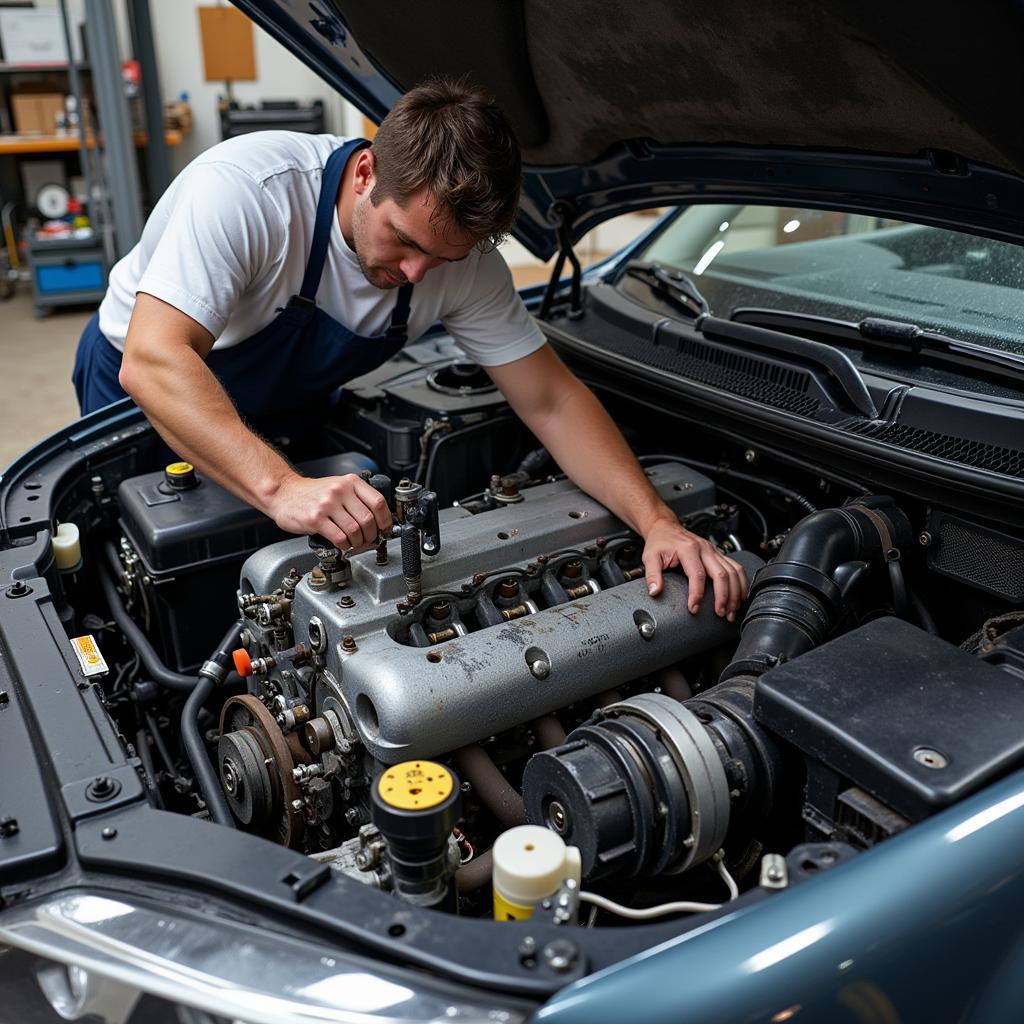Right there the problem becomes crystal clear: your car is in water. Whether it’s a flash flood, a runaway wave, or an unfortunate slip into a lake, a submerged car is every driver’s nightmare. This article guides you through the crucial steps to take after such an incident, whether you’re an owner, a mechanic, or an automotive technician. We’ll cover everything from initial safety measures to long-term repair considerations.
Assessing the Damage: First Steps After the Plunge
After ensuring your safety and contacting emergency services, assessing the damage is crucial. The extent of the damage depends on several factors, including the depth and duration of submersion, and whether the engine was running at the time of the incident. Saltwater immersion is particularly damaging due to its corrosive nature.
- Do NOT attempt to start the car. This can cause further, irreversible damage to the electrical system and engine.
- Disconnect the battery. This crucial step minimizes the risk of electrical shock and further damage to the electronic components.
- Document the damage. Take photos and videos of the waterline both inside and outside the car. This documentation will be essential for insurance claims.
 Car Submerged in Water Showing Flood Damage
Car Submerged in Water Showing Flood Damage
Right There the Problem: Electrical System Woes
Water and electricity don’t mix, and your car’s electrical system is highly vulnerable after water exposure. From the simple power windows to the complex engine control unit (ECU), nearly every system can be affected.
Diagnosing Electrical Issues
A thorough inspection of the wiring, connectors, and electronic modules is necessary. Look for signs of corrosion, water damage, and loose connections. Specialized diagnostic tools may be required to assess the functionality of electronic components.
- Check fuses and relays. These are often the first components to fail in a water-damaged car.
- Inspect the wiring harness for damage. Look for signs of chafing, exposed wires, or corrosion.
Mechanical Mayhem: Engine and Transmission Damage
If the engine was running when the car went underwater, it’s highly likely that water has entered the cylinders, causing hydrolock. This can result in bent connecting rods, damaged pistons, and a cracked engine block. The transmission, similarly, can be severely damaged by water intrusion.
Addressing Mechanical Issues
- Check the engine oil and transmission fluid for water contamination. A milky appearance indicates water presence.
- Inspect the air filter and intake system. These components can be clogged with debris and water.
- Drain all fluids. This includes engine oil, transmission fluid, coolant, brake fluid, and power steering fluid.
- Flush the systems with clean fluids. This helps remove any remaining water and contaminants.
“After a car has been submerged, it’s essential to address the mechanical damage promptly. Delayed action can lead to more extensive and costly repairs,” says John Miller, Senior Automotive Engineer at Miller Automotive Solutions.
 Car Engine Water Damage Assessment
Car Engine Water Damage Assessment
Drying Out and Prevention: Long-Term Solutions
After the initial assessment and repairs, thoroughly drying the car is critical to prevent mold and mildew growth. This includes removing carpets, upholstery, and any other water-soaked materials. Using dehumidifiers and fans can accelerate the drying process.
“Preventing future incidents is just as important as addressing the current damage,” advises Sarah Johnson, Lead Mechanic at Johnson Auto Repair. “Regularly check weather reports and avoid driving through flooded areas.”
Conclusion: Navigating the Aftermath of a Submerged Car
Dealing with a car submerged in water is a challenging situation, but understanding the right steps can mitigate the damage and help you get back on the road. Remember, safety comes first, and a thorough assessment is key to a successful recovery. If you’re facing this right there the problem, don’t hesitate to contact us at AutoTipPro for expert advice and assistance. Call us at +1 (641) 206-8880 or visit our office at 500 N St Mary’s St, San Antonio, TX 78205, United States.
FAQ
- Can a flooded car be repaired? Yes, but the extent of damage determines the feasibility and cost of repair.
- How long does it take to dry out a flooded car? It can take several days to weeks, depending on the severity of the flooding.
- Will insurance cover flood damage? It depends on your insurance policy. Comprehensive coverage typically covers flood damage.
- What should I do if my car stalls in floodwater? Do not attempt to restart the car. Exit the vehicle immediately and seek higher ground.
- How can I prevent my car from flooding? Avoid driving through flooded areas and park in elevated locations during heavy rain.
- Is it safe to drive a car after it has been flooded? Not until it has been thoroughly inspected and repaired by a qualified mechanic.
- What are the long-term effects of water damage on a car? Corrosion, electrical problems, and mechanical issues can persist even after repairs.





Leave a Reply